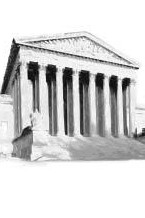Schopenhauercı İsteme’den Nietzscheci Dionysos’a ya da Kötümserliğin Üstesinden Gelmenin Trajik Karakteri
Schopenhauer, Nietzsche, Estetik, Müzik, Tragedya, Trajik İnsan
From Schopenhauerian Will to Nietzschean Dionysus or the Tragic Character of Overcoming the Pessimism
Schopenhauer, Nietzsche, Aestethics, Music, Tragedy, Tragic Man,
___
- Aristoteles. (2017). Poetika (çev. A. Çokona & Ö. Aygün). İstanbul: Türkiye İş Bankası Kültür Yayınları.
- Bell, M. (2012). Friedrich Schiller, Moral Sentimentalism and the Emergence of the Aestethic. Aestethics and Modernity from Schiller to the Frankfurt School (ed. J. Carroll, S. Giles & M. Oergel, pp. 9-24). Bern: Peter Lang AG International Academic Publishers.
- Cevizci, A. (2009). Felsefe Tarihi (1. baskı). İstanbul: Say Yayınları.
- Herakleitos. (2016). Fragmanlar (çev. A. Akgün). İstanbul: Kabalcı Yayıncılık.
- Kant, I. (2017). Arı Usun Eleştirisi (çev. A. Yardımlı). İstanbul: İdea Yayınevi.
- Kant, I. (2011). Critique of Judgement (trans. by W. S. Pluhar). Indianapolis: Hackett Publishing Company.
- Kaufmann, W. (2013). Nietzsche: Philosopher, Pscyhologist, Antichrist (1st Princeton Classics edition). William Street: Princeton University Press.
- Laertios, D. (2017). Ünlü Filozofların Yaşamları ve Öğretileri (çev. C. Şentuna). İstanbul: Yapı Kredi Kültür Sanat Yayıncılık.
- May, M. K. (1990). Nietzsche and the Spirit of Tragedy (1st edition). New York: Palgrave Macmillan.
- Nietzsche, F. (2011a). Ahlakın Soykütüğü - Bir Polemik (çev. Z. Alangoya). İstanbul: Kabalcı Yayınevi.
- Nietzsche, F. (2006). Ecce Homo (çev. C. Alkor). İstanbul: İthaki Yayınları.
- Nietzsche, F. (2015). Putların Alacakaranlığı (çev. M Tüzel). İstanbul: Türkiye İş Bankası Kültür Yayınları.
- Nietzsche, F. (2003). Şen Bilim (çev. L. Özşar). Bursa: Asa Kitabevi.
- Nietzsche, F. (1968). The Will to Power (trans. by W. Kaufmann & R. J. Hollingdale). New York: Vintage Books.
- Nietzsche, F. (2017). Tragedyanın Doğuşu (çev. M. Tüzel). İstanbul: Türkiye İş Bankası Kültür Yayınları.
- Nietzsche, F. (2011b). Yunanlıların Trajik Çağında Felsefe (çev. G. Aytaç). İstanbul: Say Yayınları.
- Rosset, C. (2013). Schopenhauer, philosophe de l’absurde (4ème édition). Paris: Presses Universaires de France.
- Schiller, F. (1999). Estetik Üzerine (çev. Doç. Dr. M. Özgü). İstanbul: Kaknüs Yayınları.
- Schopenhauer, A. (2012). Bilmek ve İstemek (çev. A. Aydoğan). İstanbul Say Yayınları.
- Schopenhauer, A. (2010). Güzelin Metafiziği (çev. A. Aydoğan). İstanbul: Say Yayınları.
- Schopenhauer, A. (2017). İsteme ve Tasarım Olarak Dünya (çev. L. Özşar). İstanbul: Biblos Kitabevi.
- Thomson, G. (2004). Tragedyanın Kökeni (çev. M. H. Doğan). İstanbul: Payel Yayınları.
- Young, J. (2017). Nietzsche - Bir Filozofun ve Felsefesinin Biyografisi, (çev. B. O. Doğan). İstanbul: Türkiye İş Bankası Kültür Yayınları.
- Young, J. (1992). Nietzsche’s Philosophy of Art (1st edition). Cambridge: Cambridge University Press.
- Young, J. (2005). Schopenhauer (1st edition). New York: Routledge.
- Yayın Aralığı: Yılda 2 Sayı
- Başlangıç: 2002
- Yayıncı: Bursa Uludağ Üniversitesi
Osmanlılarda Sözdebilim Tartışması: Spiritüalizm Örneği (1910)
Faydacılığın ve Deontolojinin Ötesinde: Hayvan Etiği İçin İhtimam-Temelli Bir Çerçeve
Gasset Felsefesinde Kitleselleşme Sorunu, Kültür Eğitimi ve Üniversitenin Misyonu
Yolun Sonu: Kant'ın Spinoza Metafiziğine Bakışına Dair Bir Tartışma
Savaş Üzerine'de Diyalektik ve Özgürlük Sorunu
Pandemi (Covid-19) Dönemini Albert Camus İle Düşünmek: Nasıl Yaşamalıyız?
Erken Alman Romantizminde İronik ve Poetik Hakikat
Kartezyen Metafiziğin Kurucu İlkeleri
